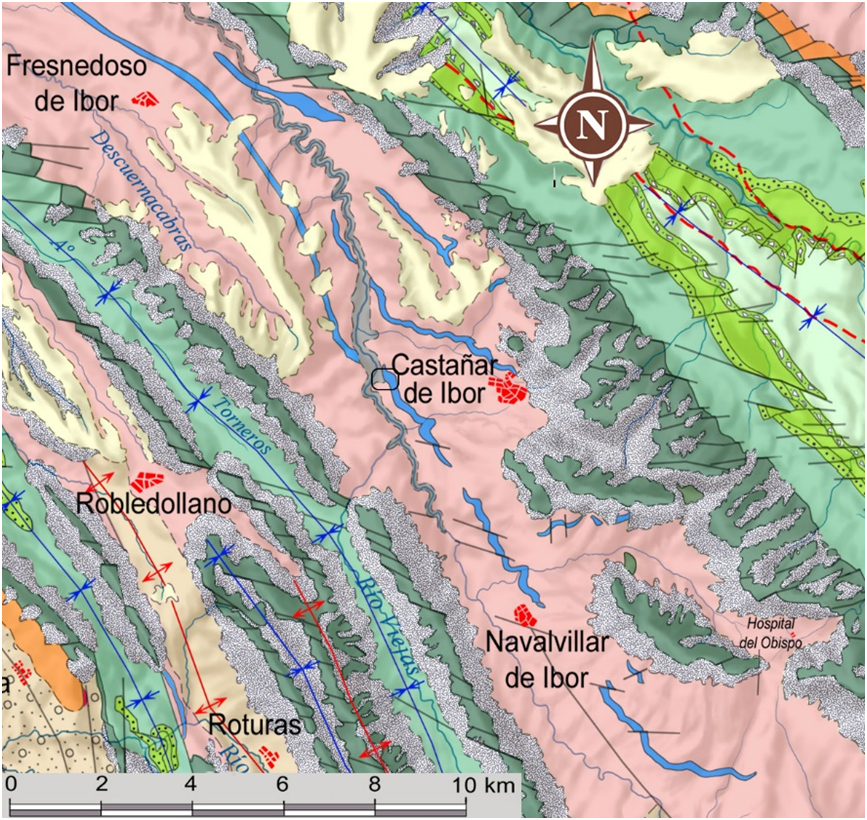LOCATION AND ACCESS
The deposit is located in the Cerro de la Mina and is accessed through the Fresnedoso road, which is taken a few meters before Km 31 of the EX-386 road in the direction of Robledollano. After 1300 meters we come to a crossroads where we will take the new road to the right and after 700 meters we arrive at the site on the right hand side of the road. There are areas to leave several cars.
GEOLOGICAL INTERPRETATION
It is a palaeontological site located within the first level of limestone and dolomites belonging to the Villarta Formation of the Ibor Group, a unit deposited at the end of the Ediacaran period in a mixed terrigenous-carbonate marine platform environment, that formed in a back-arc basin during the Cadomian Orogeny. In this unit, laminated shale levels with sandstone intercalations tend to predominate, although the aforementioned levels of limestone and dolomites are also frequent, which are the ones that constitute the deposit of the geosite. The most notable feature of these carbonate levels is the presence of Cloudina, one of the first metazoans to secrete a calcareous exoskeleton and which can be identified at the site, where numerous specimens form bioconstructions together with algal laminations.
Cloudina is a millimeter-sized fossil with an elongated and tubular geometry, which is composed of an exoskeleton of magnesium-rich calcite, and whose remains have traditionally been associated with cnidarians, although it has recently been proposed to belong to the annelid clade.
It should be noted that the surroundings of the Geopark and the surrounding areas are the only places in Europe where remains of Cloudina have been found, which together with Sinotubulites, Namacalathus and other skeletal fossils from the end of the Ediacaran, are the precursors of the widespread biomineralization that occurred in animals at the beginning of the Cambrian, favoring new feeding and defense strategies that allowed the colonization of new environments.


